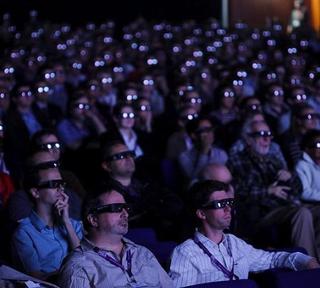3DTV Standards Tackled by U.K. and International Groups
LONDON and GENEVA, SWITZERLAND:At least two more technology standards bodies are taking up the mantle of 3DTV. The Digital TV Group is developing a standard for 3DTV in the U.K., the group said last week. The International Telecommunication Union, the communications tech group for the United Nations, announced a similar effort Jan. 14.
The DTG launched an industry consultation last year to get feedback on “the technological feasibility and viability of the technology, and the role in which the DTG should play in its development,” the group said. The effort will cover both broadcasting and the Internet.
“Our 3D consultation revealed members had concerns over uncertainties over standards for 3D and clearly told us the DTG should assume a leadership role in developing an approved, open standard for broadcast 3D,” said Simon Gauntlett, DTG director of technology. “3D has evolved from an emerging technology limited to cinema into a compelling home entertainment proposition--with broadcasters set to launch 3D services as early as this year and technical standards approved for 3D Blu-ray and HDMI--what is currently missing is a standard for delivering 3D to the home via broadcast or IP delivery.”
The ITU’s Study Group 6 released a report earlier this month outlining a roadmap for 3DTV implementation. The plan calls for a three-phase approach. The first would involve “plano-stereoscopic TV,” requiring active-shutter glasses to create the 3D effect from dual images. This type of format delivers a single view in the sense that when the person watching moves, the view stays the same. Second-generation implementations will have multiple views.
Generation three is expected to feature systems that “that record the amplitude, frequency, and phase of light waves, to reproduce almost completely human beings’ natural viewing environment.” The ITU said such systems are around 15 to 20 years in the future.
The ITU-R Study Group 6 will meet again in April.
Stateside, the Society of Motion Picture and Television Engineers has a 3D Standards Working Group actively developing a 3DTV standard that covers multiple distribution formats, from DVDs to broadcasting, cable and satellite delivery. Peter Symes, director of engineering for SMPTE, said the work is expected to be completed midway through this year, however complicated. Issues of content insertion, compression, subtitles and metadata all require re-engineered approaches versus the delivery of 2D video.
The MPEG Industry Forum is also working on a standard format for 3DTV from the perspective of compression. The Forum launched its working group earlier this month. The advantage to using an MPEG-based compression scheme for 3DTV is that existing infrastructures can handle it, though in a somewhat limited resolution.
More on 3DTV standards:
January 20, 2010: “3DTV Standards Face Multiple Obstacles”
3DTV systems must support multiple delivery channels, multiple coding techniques and multiple display technologies, and everything in the associated workflows.
January 20, 2010: “A 3DTV Update From the MPEG Industry Forum”
Much of today’s television infrastructure can handle 3D video in a developmental form, but doing full hi-def 3D with motion graphics is another story.
January 6, 2010: “JVC Stereoscopic Image Processor”
JVC’s IF-2D3D1 Stereoscopic Image Processor works as a 2D-to-3D converter and as a 3D left/right mixer.
January 5, 2010: “TVB’s 3DTV Timeline”
Despite the economic difficulties of 2009, the year marked a turning point in the adoption of 3D a viable entertainment format.

Get the TV Tech Newsletter
The professional video industry's #1 source for news, trends and product and tech information. Sign up below.
